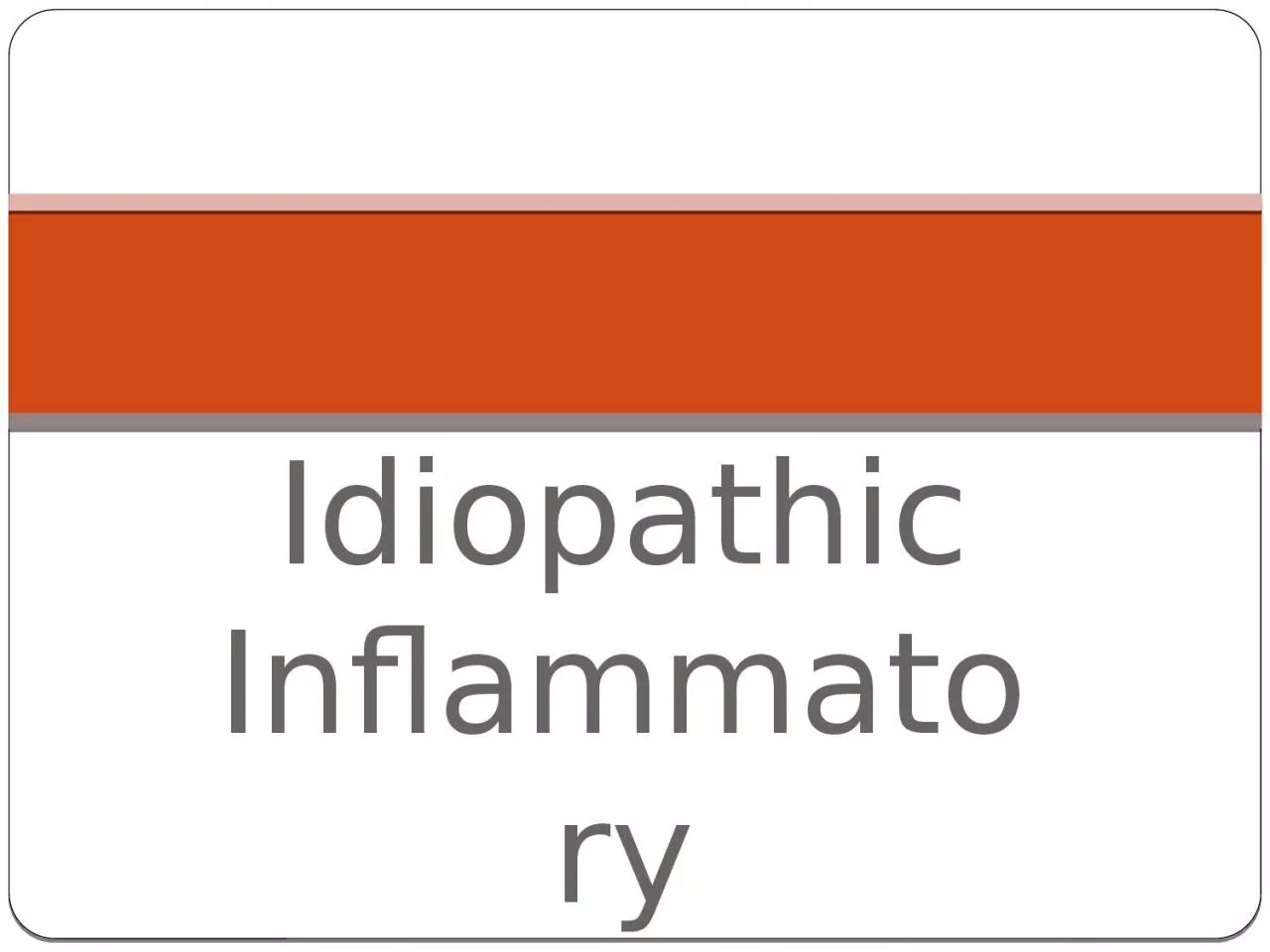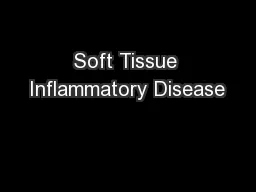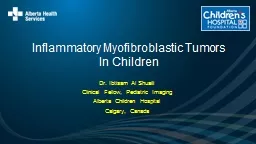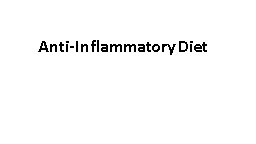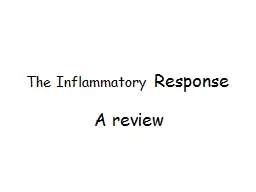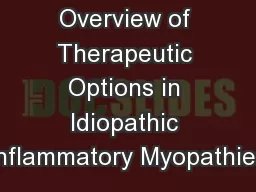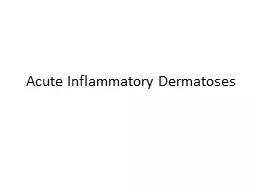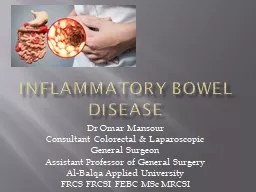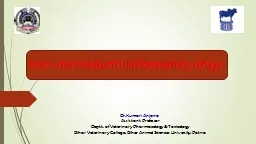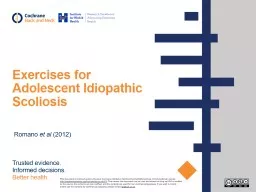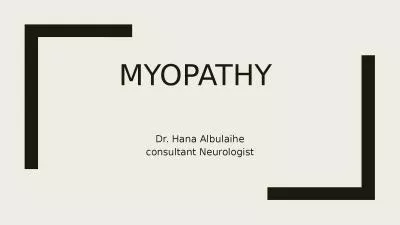PPT-Idiopathic Inflammatory Myopathies
Author : freya | Published Date : 2022-06-15
The idiopathic inflammatory myopathies IIM are a heterogeneous group of disorders characterized by symmetric proximal muscle weakness and elevated serum levels
Presentation Embed Code
Download Presentation
Download Presentation The PPT/PDF document "Idiopathic Inflammatory Myopathies" is the property of its rightful owner. Permission is granted to download and print the materials on this website for personal, non-commercial use only, and to display it on your personal computer provided you do not modify the materials and that you retain all copyright notices contained in the materials. By downloading content from our website, you accept the terms of this agreement.
Idiopathic Inflammatory Myopathies: Transcript
Download Rules Of Document
"Idiopathic Inflammatory Myopathies"The content belongs to its owner. You may download and print it for personal use, without modification, and keep all copyright notices. By downloading, you agree to these terms.
Related Documents

